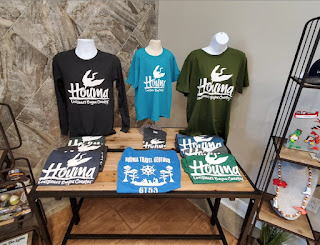Being an armchair adventurer has its advantages. Travelers have all the time they need to explore a destination’s hidden treasures as well as experience the local cuisine and culture. As we embark on part two of our Louisiana adventure we are heading the 57-miles to Terrebonne Parish, the heart of Bayou Country. Louisiana has 64 parishes that are the equivalent of counties in other states. Terrebonne created in 1822, is the 2nd largest parish and is one of the southernmost. It covers 2,100 sq. miles and abuts the Gulf of Mexico. The French named the area “terre bonne”, good earth because of its fertility, fish and game and sheer beauty. Houma was established in 1834 and named the parish seat because it was at the junction of six bayous and offered transit opportunities. #BayouCountry
Houma was named after the Houmas Indians, whose name means “red”. It is believed they settled the area in the 1700s to escape other tribes and one of their encampments, Ouisi Bayou, was in what is now greater Houma. The area was settled by French, Spanish and Anglo-Saxons as well as French Acadians (1765-85) who were exiled from Nova Scotia. The Acadians remained insular and preserved their “Cajun” culture heritage. An Acadian Deportation Cross, one of 37, is displayed in downtown Houma.houmatravel.com
Terrebonne’s first plantation was established in 1828 and by 1851 there were 110 and sugar cane was the primary crop. Louisiana’s final slave census, in 1860, shows there were approximately 331,726 slaves and 18,647 free blacks. Terrebonne’s plantations tended to bring African slaves from regions that already possessed the skills needed on the plantation. This created a situation where Africans from the same region, generally Senegambia, were kept together and Louisiana’s Code Noir, French laws governing slavery, forbade the breaking up of families. These conditions allowed blacks to maintain aspects of their culture that are shared today. @HoumaTravel
The Houma Area Visitors Center is the perfect doorway into the Bayou and all it has to offer. Thematic exhibits cover all aspects of exploring the bayou from dining and accommodations to swamp and plantation tours. Showcased there are the personal stories of people like slave traders Jim Bowie and Jean Lafitte and the kidnapped African prince, Abdul Rahman Ibrahama. Giant boots on the exterior provide a wonderful photo op. The region’s hospitality starts here! #TheBigBoots
Gothic Revival Southdown Plantation/Terrebonne Museum offers tours of the sugar plantation and parish museum. Originally part of a Spanish land grant, the 10,000 sq. ft., 20 room, mansion was built in 1858 and was family owned until 1936. The walls are 12-inches thick and the house is 65-ft. deep. The museum displays historic artifacts and antiques. Guided tours of the mansion and unique two-story slave quarters are offered. www.southdownmuseum.org
Laura Plantation is a raised French-Creole plantation house constructed in 1805 in the house of 30 style, with marked beams still visible in the basement. A plantation tour interprets the history of the people who lived here over time, the ruling class as well as the 400 enslaved, through documented stories. Grounds’ tours highlight the dependencies and the 4 remaining original slave dwellings. In 1994 Laura was the first plantation to share the unvarnished story of slavery on this sugar plantation. In the ensuing years it has been a leader in both scholarship and presentation. A visit to Laura adds substantially to an understanding of aspects of Louisiana sugar plantation slavery. lauraplantation.com
Each mansion is different and the 21-room Victorian Gothic Ardoyne Plantation is no exception. Built in 1890 near Bayou Black the 2-story mansion features unusual architectural elements such as a 75-ft. tower, gingerbread woodwork, 2 gables and square pillars. There were 1,000-acres and 67 slaves in 1860. The home has remained in the same family and the furnishings and structural elements are original. Guided tours take you into the world of a sugarcane plantation and give personal insights into the people who lived there. @ArdoynePlantation
Down the Bayou Shrimp Tours helps you better understand the seafood industry from preparing the boat to processing and sales. Walk among the shrimp boats and learn about the equipment used, how they operate and factors that influence the industry. This family-owned business joins in the harvesting of 10-million pounds of Louisiana shrimp annually, the most eaten seafood in the US. You will love this unusual tour and it is enjoyable for all ages. Kim’s Shuga Shack, on the premises, uses fresh, local ingredients. The food is plentiful and outstanding. Make a day of it. @DowntheBayouShrimpTours
If you desire a taste of alligator bites and charbroiled oysters head for Cajun Critters, a Cajun restaurant serving authentic foods. This is a favorite of locals so be prepared to wait. It is worth it. @cajuncritters.seafood
Houma’s Fairfield Inn & Suites by Marriott® is wonderfully situated for accessing sites throughout the parish. This 68-room hotel’s amenities include complimentary full breakfast, WIFI and parking. marriott.com/hotels/travel/msyhf-fairfield-inn-and-suites-houma
























No comments:
Post a Comment